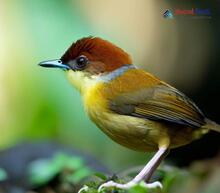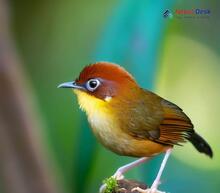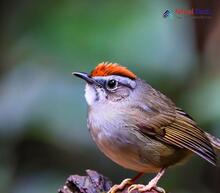Nestled in the diverse landscapes of Nepal, the captivating Cettia genus of birds awaits your discovery. With their distinctive vocalizations and intriguing behavior, these small insectivorous songbirds have captured the hearts of bird enthusiasts and researchers alike. Here, we'll delve into the fascinating world of Cettia birds in Nepal and learn more about their unique attributes.
A Melodious Encounter with Cettia: A Hidden Treasure in Nepal's Ecosystem
As you embark on a journey through Nepal's vibrant ecosystems, you'll likely come across one of the many Cettia genus members serenading the forests or grasslands. These small birds generally have plain plumage that helps them remain inconspicuous among dense vegetation. This unassuming appearance, however, disguises their true charm: an enchanting repertoire of songs and calls that never fail to captivate those who hear them.
Different Species of Cettia Found in Nepal
There are several species of Cettia birds found across various habitats, altitudes, and regions in Nepal. Some notable examples include:
Bush Warbler (Cettia brunnifrons)
This tiny bird with brownish plumage is commonly found in shrubs and grasslands at elevations up to 4,000 meters. Its song is a series of high-pitched whistles that punctuate the mountain air.
Chestnut-headed Tesia (Cettia castaneocoronata)
Adorned with a remarkable chestnut-colored cap, this tesia can be spotted flitting through undergrowth in dense forests. With a lively song and rapid movements, it adds a splash of color and energy to its surroundings.
Gray-sided Bush Warbler (Cettia brunnescens)
Inhabiting thickets and scrub areas at elevations between 1,800 to 4,100 meters, the gray-sided bush warbler is a resident bird of Nepal. Its dark gray plumage and distinctive call make it one of the more easily identifiable birds in the Cettia genus.
A Fascinating Study in Avian Acoustics
One of the most captivating aspects of Cettia birds is their ability to produce an array of complex vocalizations. They use these melodic sounds for various purposes, such as attracting mates, defending their territory, or communicating with other birds in their social group. The vocalizations of each species are unique, thus making them an interesting subject for in-depth scientific study on avian acoustics.
Conservation Efforts and Responsible Bird Watching
As with many other wildlife species, habitat loss and degradation pose significant threats to Nepal's Cettia bird populations. Thankfully, numerous conservation efforts are underway to protect these enchanting birds, including the establishment of protected areas and habitat restoration projects. As a birder or nature enthusiast visiting Nepal, practicing responsible bird watching – such as minimizing disturbance to the birds and their habitats – can go a long way in supporting these conservation initiatives.
In conclusion, the Cettia genus offers a fascinating glimpse into the rich avian diversity in Nepal's natural landscapes. With their melodious calls and intriguing adaptations, they truly are nature's symphony that resonates across the mountains and plains of this awe-inspiring country. So, while exploring Nepal's vibrant ecosystems during your next visit, be sure to keep an ear out for the mesmerizing sounds of Cettia's delightful performers.




